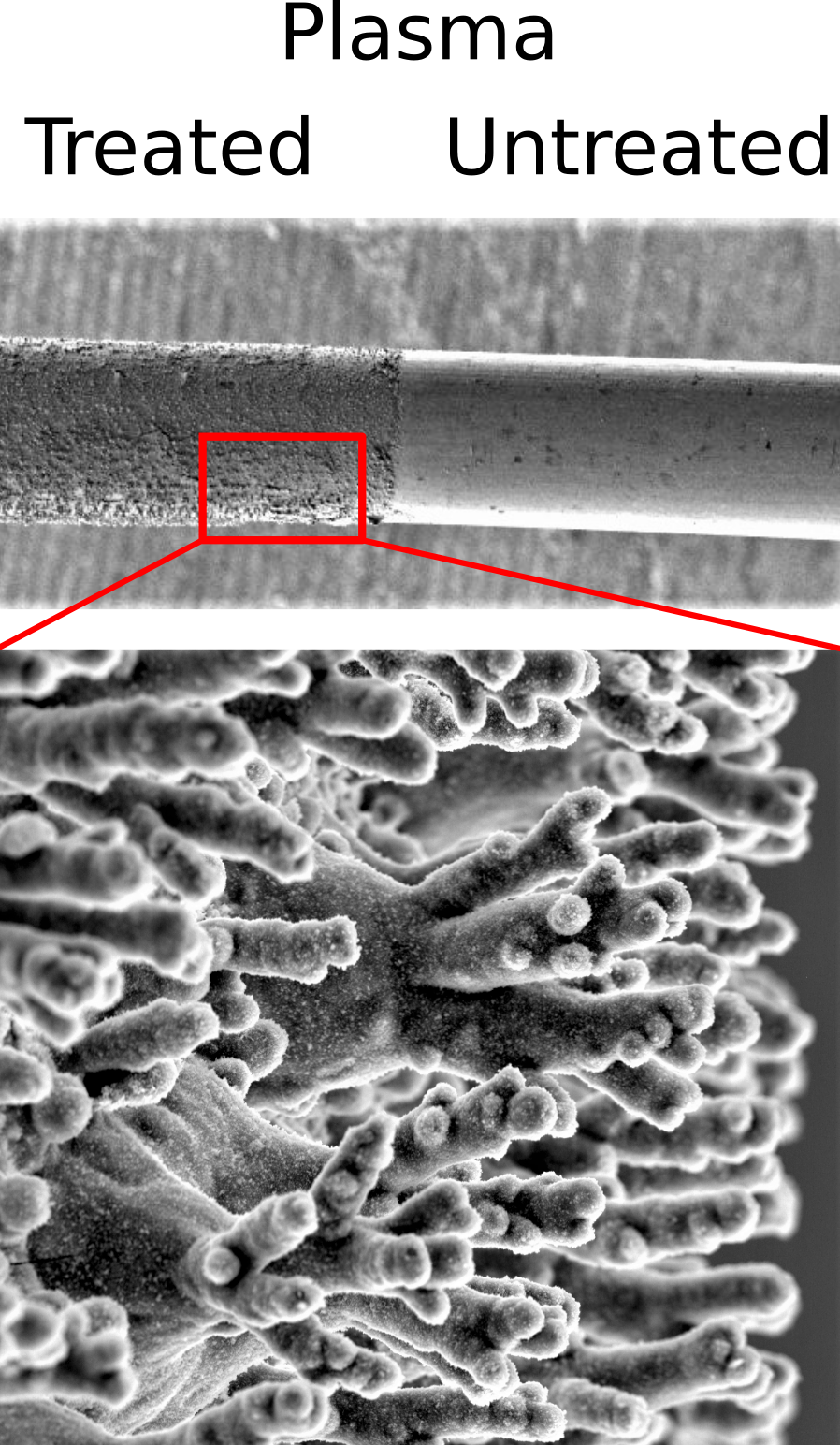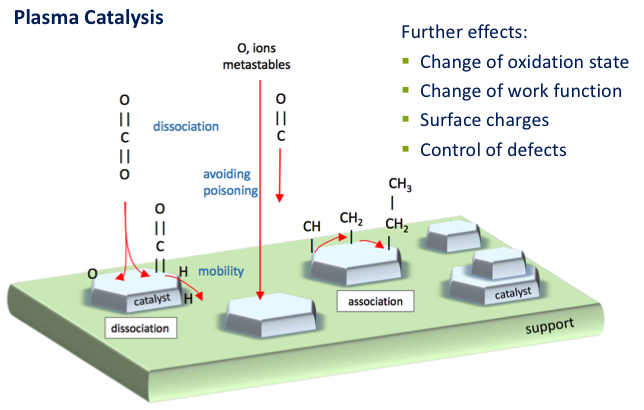Group Leader
Dr. Albert Engstfeld
The interaction of plasmas with surfaces of solid materials is of importance not only for our fundamental understanding of such interfaces, but also for applications such as in catalysis or in the energy sector. Due to their unique physical properties, plasmas are capable to alter the interfacial structure, help nanostructuring surfaces or even enhance the activity of a catalytic surface. Over the last decade, also the interaction of plasmas with aqueous systems has attracted a lot of interest for medical and biological applications, waste water treatment, in liquid nanoparticle formation and material modification or functionalization. In rare cases plasma treated electrodes are also considered as electrocatalyst materials.

The application of plasmas in heterogeneous gas phase catalysis has gained increasing interest over the last decades. However, similar studies to understand plasma-induced structure formation of electrocatalyst materials or the influence of plasmas on electrocatalytic processes are still very scarce. The aims of our research in this area are (i) to develop suitable experimental setups to investigate plasma electro-catalysis, (ii) to prepare in-liquid plasma-induced electrocatalytically relevant model electrodes and (iii) to understand the interaction of in-liquid generated plasma and species on an electrochemical electrode placed in proximity to the plasma electrode in the solution. In combination with electrochemical, surface science and plasma diagnostic tools a more complete fundamental understanding of the different interfaces between the electrode, the electrolyte and the plasma should be gained. Further, we aim to better understand the structure formation and mechanism of electrochemical reactions in the presence of different plasmas.
This project is supported by the SFB-CRC1316 and the FCI
Group Leader
Dr. Albert Engstfeld

While for molecules or rather small systems multi-configurational methods or multi-reference perturbation theory are able to describe excited states or plasmas, surface-plasma interfaces are beyond the capabilities of these approaches.
The aim of our activities is to develop a theoretical framework for modeling surface/plasma interfaces based on quantum-mechanics, but also on molecular dynamics and to use this approach to investigate the morphology as well as processes at the surface/plasma interface, especially concentrating on plasma-catalytic reactions.
This project is supported by the SFB-CRC1316
Group Leader
Prof. Dr. Timo Jacob
Dr. Karsten Christoph Jung